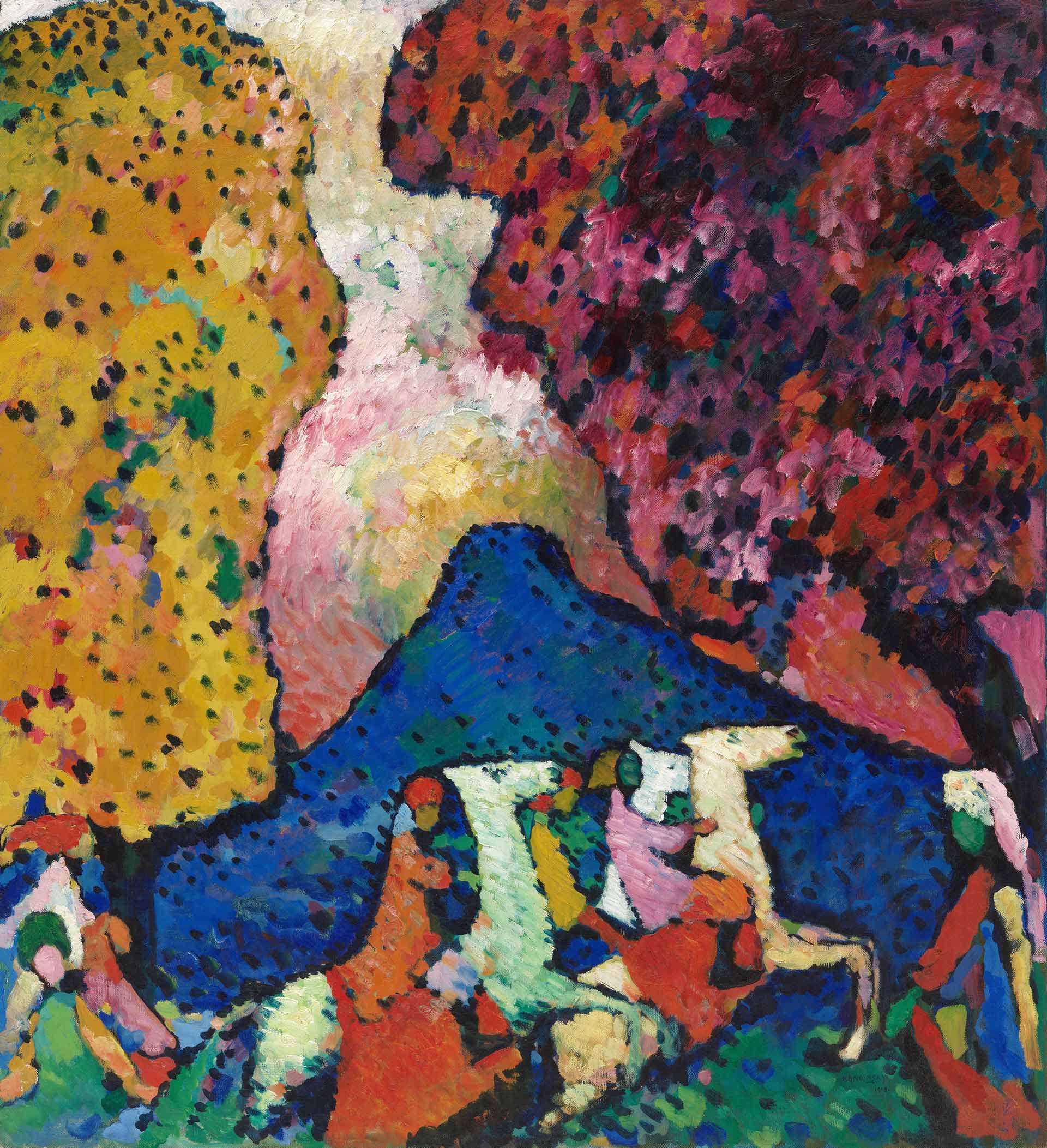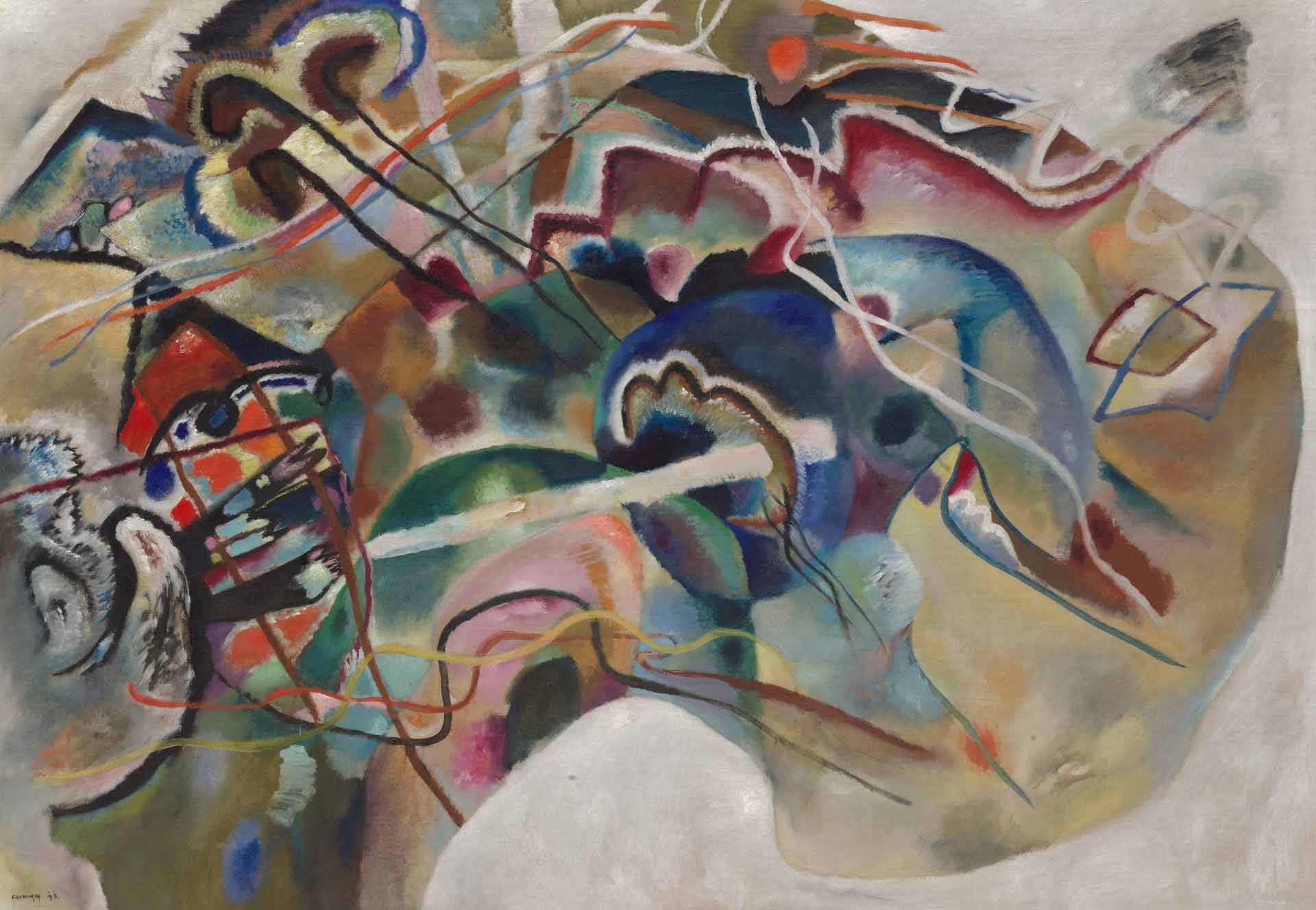Beginnings: Munich
Gallery 305–306
Vasily Kandinsky spent his childhood in his birthplace of Moscow and Odessa, Russia (now Ukraine), where his family encouraged an appreciation for art and music. He studied law and economics before changing course in 1895 to become a manager in Moscow printing firm Kushnerev. One year later, after having been inspired by a French Impressionist exhibition and an opera by Richard Wagner, he left for Munich to pursue art. Recollections of Russia, such as the brightly decorated furniture and votive pictures from peasants’ homes, as well as romantic historicism, lyric poetry, folklore, and fantasy, informed his early work.
Kandinsky and his partner, the German artist Gabriele Münter, traveled extensively in Europe and North Africa between 1904 and 1907, before settling in Munich again in 1908. Compositional elements found in printmaking, such as clearly delineated forms and flattened perspective, pervade Kandinsky’s multicolor Bavarian landscapes of 1908–09. These paintings differ remarkably from his previous exercises in Neo-Impressionism, in which he built up works through small dabs of color.
While in Munich, Kandinsky alternately helmed the city’s leading avant-garde groups, including Phalanx and Neue Künstlervereinigung München (New Artists’ Association of Munich), and published several seminal treatises, such as Über das Geistige in der Kunst (On the Spiritual in Art). In 1911 he and Franz Marc founded Der Blaue Reiter (The Blue Rider), a loose association of artists interested in the expressive potential of color and the symbolic—often spiritual—resonance of forms.
By 1913 Kandinsky’s recurrent subjects—including the horse and rider, rolling hills, towers, and trees—had become subsidiary to line and color. As his calligraphic contours and rhythmic forms revealed scarcer traces of their representational origins, Kandinsky began to advance abstraction and elicit what he called the “hidden power of the palette.”




